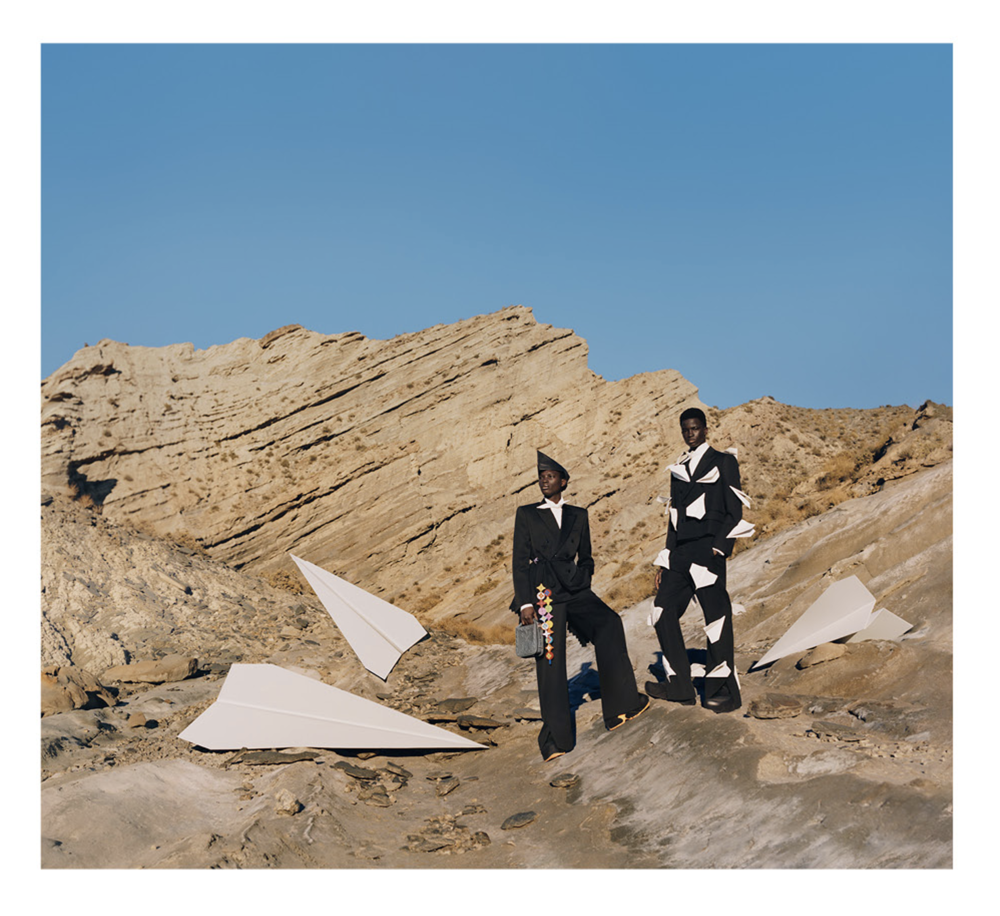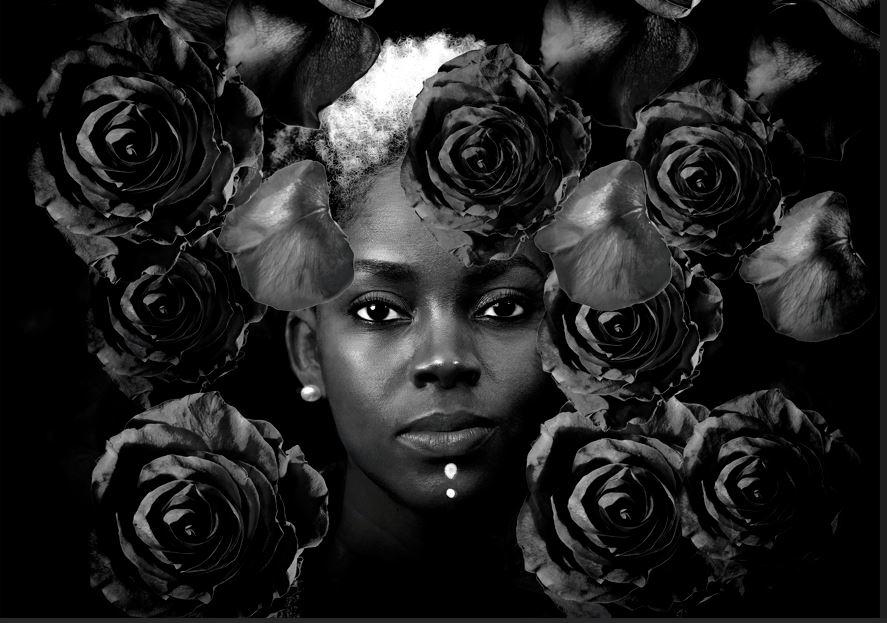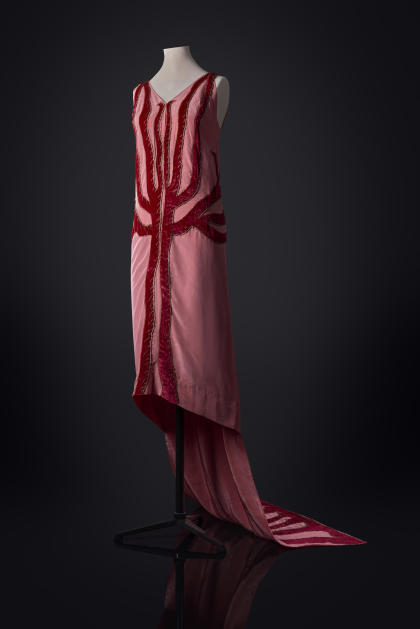
Caption
Tyler Mitchell's 'Untitled (Paper Planes), 2022' is a key work in his new solo exhibition at Atlanta's High Museum of Art. The show is on display until Dec. 1, 2024.
Credit: Tyler Mitchell / Courtesy of the High Museum of Art
|Updated: July 3, 2024 7:57 AM
LISTEN: GPB's Devon Zwald and Kristi York Wooten discuss new art exhibitions in Atlanta.

Tyler Mitchell's 'Untitled (Paper Planes), 2022' is a key work in his new solo exhibition at Atlanta's High Museum of Art. The show is on display until Dec. 1, 2024.
Several art exhibitions and Atlanta are grabbing attention.
First, Marietta, Georgia's Tyler Mitchell was 23 when he became the first Black photographer to shoot a cover for Vogue. His image of Beyoncé wearing a golden crown graced the magazine's September 2018 issue, and his star rose.
Now, a new solo exhibition titled Idyllic Space at Atlanta's High Museum is bringing international attention to Mitchell's work again, but with a much broader scope than the editorial work that made him famous.
Another exhibition, this one at the Centers for Disease Control and Prevention, or CDC, explores the impact of the pandemic on artists.
And a 1920s themed experience at SCAD Fash, a museum at the Savannah College of Art and Design's Atlanta campus, includes vintage clothing and accessories from the glamorous 1920s.
GPB’s Kristi York Wooten is here to talk about the exhibitions.
Devon Zwald: Let's start with the exhibition at the High Museum. Can you tell us a little about Tyler Mitchell's photography?
Kristi York Wooten: Tyler Mitchell ticks all of the boxes for what makes a great visual storyteller through photography. He's using the media of photography, film and sculpture in a traditional way. His photographs are hanging and projected on the walls and ceiling of the High Museum —not just images on Instagram in the palm of your hand — so that's that's one thing about his work that's traditional in that way, but they’re also beautiful.
[The photographs are] very painterly in their presentation. And he references everything from a famous pointillist work from 1884, and harkens back to some chilling photos from the Jim Crow era of the mid 20th century South. So, he's spanning sort of a historical time period. And Maria Kelly, the High Museum’s Assistant Curator of Photography, explains the appeal of Mitchell's work, particularly this image "Georgia Hillside Redlining."
Maria Kelly: So in one work, "Georgia Hillside Redlining," he's actually created this beautiful scene. And most of his photographs are staged. They're not just scenes that he happens upon, he’s staging them. And so, he has families and people at play, at rest, all kind of sprawled out across this hillside. But then he has actually spray-painted red lines onto the grass in between all of them. And he's referring to the practice of redlining, which is denying financial credit to minority classes to try and keep segregation in place. This was outlawed, of course, but its effects are still in play today. So, he has this really, nuanced way of addressing very important and real societal issues, but putting it in these beautiful landscapes — they draw you in, and then you start thinking about the more, you know, the deeper substance in the image that you're seeing.
Devon Zwald: So it sounds like Mitchell's photography spans a wide range of styles and themes. How do the curators blend the pop cultural and the high art sensibilities into this exhibition?
Kristi York Wooten: What struck me most about the beauty of this exhibition was the way it's portrayed, and in a seamless way, it blends some of his editorial stylings. There's a work called [Untitled (Paper Planes), 2022]. It's very angular and very posed. And then he also brings in — he has a keen eye for these natural elements that represent the diaspora, and brings in some history of African art with landscapes, woods, sand in these crisp summer skies. So people who are looking for the style that he brought to those Vogue images of Beyoncé, they'll find what they're looking for here. But so will everyone who's looking for a history lesson as well. It's fascinating how he blends these two worlds together, and I think that's what's most striking about the work. It's open to the public through Dec. 1 at the High Museum. And here's what Maria Kelly said about the way the work blends together.
Maria Kelly: So I hope that people who come to see this exhibition who maybe know the Beyonce photograph and his other works like that — kind of are hopefully just blown away by the breadth of his work, the fact that he has these sculptural pieces. There's a video piece in the exhibition that's incredible. You sit on a beanbag, you recline, you watch the video on the ceiling. There's a lot of really beautiful experiences to be had in the exhibition. And I think he's more than what that — that one note is.

"Behold the Land"
Devon Zwald: Kristi, there's also an art exhibition at the CDC. Can you tell us a little bit about that one?
Kristi York Wooten: So yes, the CDC has art! And check out gpb.org for a story that our senior health reporter Ellen Eldridge did about this exhibition. It's in a space called the David J. Spencer CDC Museum. And the exhibitions are curated in association with the Smithsonian in Washington, D.C. But this latest one is unique. It runs through Oct. 25, and it's called Stand and Witness: Art in the Time of COVID-19. And it features multimedia works about all aspects about how the pandemic changed daily life, especially for artists. In our GPB story focus on the stunning photography of Atlanta artist Sheila Pree Bright. She really gets up close with subjects and sees their faces and eyes. It's — it's, it's stunning work.

Madeleine Vionnet's Flame Dress (Spring/Summer 1923, France) is a pink silk moiré dress with dark pink velvet flame appliqué motif and gold metallic embroidery. It's part of the Entering Modernity: 1920s Fashion from the Parodi Costume Collection exhibition at SCAD Fash through August 25, 2024.
Devon Zwald: And the exhibit at the SCAD Fash museum — what can visitors see there?
Kristi York Wooten: Once again SCAD Fash has collaborated with the Parodi Costume Collection for Entering Modernity: 1920s Fashion, an exclusive look into the handiwork of the designers of the 1920s, including some French masters: Paul Poiret, Madeleine Vionnet and Jeanne Lanvin. And this one is up through Aug. 25, and it brings back the flapper era in a big way. The centerpiece of the exhibition is a hand-sewn “Flame Dress” with front seams and a tail. There's also a wedding gown, plenty of cocktail attire, handbags and more. It's all beads and seams and beautiful work. And the best part about these exhibitions is getting really up close and personal with famous designers’ work to understand why they were such renowned artisans in the first place. You know, in the age of fast fashion, it's great to be able to see the handiwork that used to go into clothing.
Devon Zwald: It's nice to see all the detail that these artists put into the work.
Kristi York Wooten: And it makes you realize that fashion is art.
Devon Zwald: GPB’s Kristi York Wooten, thank you so much for telling us about these exhibits today.
Kristi York Wooten: Thank you, Devon.